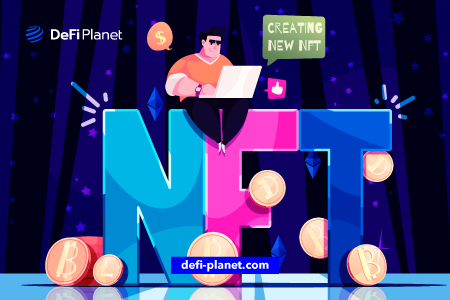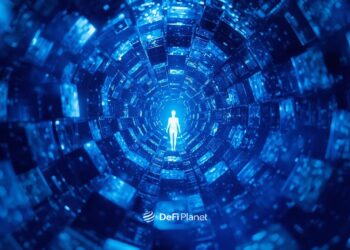The Non-Fungible Token (NFT) industry is an exciting frontier that holds endless potential for creators and investors. However, with the influx of new projects, it can be challenging to determine which ones are worth investing in.
To ensure a profitable investment and minimize risk, it’s essential to evaluate all aspects of a potential NFT project before making a commitment.
This article outlines crucial factors to consider when evaluating a new NFT project.
How To Evaluate New NFT Projects Before Minting
Here are some tips on how to evaluate new NFT projects before minting:
Assess Market Demand
Before minting your NFT, it’s crucial to evaluate the market demand for your project. This means researching similar projects and their level of success. This will give you a better understanding of how popular your project might be.
Additionally, keeping an eye on industry trends can also be a key factor in determining the demand for your project. By considering these factors, you can make an informed decision about whether investing in an NFT is the right move for you.
Understand the Legal Framework Surrounding the Project
It’s essential to understand the legal framework surrounding NFTs when evaluating new projects before making an investment or minting.
When evaluating NFT projects, it is crucial to consider several legal aspects such as privacy, security, copyright, ownership of intellectual property, and Anti-Money Laundering (AML) regulations.
As a buyer, it is important to be aware of what you are purchasing and to verify that the related smart contracts clearly outline the terms and rights you wish to acquire. It is also recommended to only trade NFTs on reputable marketplaces.
It is important to note that the seller may still retain the copyright to the NFT even after it has been sold. For instance, the NBA owns the copyright to the video of LeBron James’ slam dunk, even though the video is being sold as a collectible on the NBA Top Shot marketplace.
The video was released as part of a limited-edition NBA highlight clip collectible. NBA Top Shot is a market where NBA fans can buy and sell collectibles. However, the NBA owns the copyright, and reproduction of any purchased item is subject to the NBA’s licensing terms.
In essence, the copyright holder is the person or company that owns all rights to the work and can prevent its publication, amendment, distribution, or showcase unless exclusive rights are granted to another person or entity.
If the contract terms are breached, NFT marketplaces reserve the right to freeze users’ assets or delete their accounts, including any artwork or tokens, without even providing any notification.
It is essential to carefully read the contract’s fine print, paying close attention to the code built into the NFT, such as any royalties or commissions that may be applicable on future resale.
Due diligence by the buyer is necessary to understand the rights and obligations being acquired, which could affect the current or future value of the NFT and the underlying asset.
Evaluate the Team Behind the Project
When evaluating an NFT project, one of the key factors to consider is the background and expertise of the individuals behind it. This applies to both the technical and business aspects of the project.
The first question to ask is: Is the team anonymous, partially anonymous, or fully known?
It’s ideal if the team is not anonymous and their names, ages, and professional experiences are publicly available. This reduces the risk of potential issues such as rug pulls or project abandonment.
However, it’s common to find anonymous teams in the Web3 ecosystem, as some successful projects have been developed by anonymous individuals.
When evaluating the team’s experience, consider their past work and whether it’s relevant to NFTs. Do they have prior experience in this field? The founders don’t need to be famous, but they should have a solid background in the industry.
It’s crucial to conduct thorough research on the team before making an investment or minting tokens, as any potential issues could impact the long-term success of your investment.
Check the Tokenomics Model and Economics of the Project
One of the most important aspects of evaluating any tokenized asset (including NFTs) revolves around its tokenomics models and economic fundamentals, such as circulation supply/demand dynamics and inflationary/deflationary components applicable within its designated ecosystem(s).
The number of NFTs, the price of the mint, and the nature of the project are essential elements in an analysis. These elements are crucial in providing a complete picture of the asset and cannot be ignored.
Rarity and Price
When considering the value of a project’s Non-Fungible Tokens (NFTs), it’s important to determine whether they are truly unique or whether the project is simply another opportunistic creator mass-producing a slew of JPEGs.
In traditional art, rarity is often achieved through limited edition prints or a limited number of original artworks.
To understand the rarity of NFTs, it’s crucial to consider supply and demand. The lower the supply, the higher the likelihood of a shortage, which can drive up the value of the NFTs. However, to properly analyze this criterion, it is necessary to contextualize it with the project’s interest and community activity.
A limit is usually set for projects that issue a series of NFTs. Each NFT in that series will be one-of-a-kind and programmatically generated at the time of minting, with a unique set of features and traits. Some traits will be extremely rare, making NFTs with these traits more desirable and, thus, more valuable.
Another important factor to consider is the price. Does the price reflect the utility of the collection or just hype? Is the price reasonable, given current market conditions?
Understanding these factors can help you make a more informed decision when buying NFTs.
The nature of the project
There are numerous applications for NFTs, and you must be clear about the nature of the project. What is the NFT’s purpose? Is this a purely artistic NFT? Or does it have utility? If the NFT is purely artistic, its utility is irrelevant.
If you are an admirer of NFT art, you should take into account the artist’s reputation, the uniqueness of their style, and the originality of their work. On the other hand, if you are interested in purchasing NFTs for their utility, it is essential to understand the NFT’s functionality. Utility NFTs provide more than just a digital item to collect. They offer benefits, rights, and rewards to their holders. This includes NFTs for art, music, in-game assets, and virtual worlds.
Investigate Potential Platform Risk Factors
Investing in tokenized assets requires careful consideration of platform risks. These risks can encompass a range of factors, such as scalability, transaction validation speed, smart contract security, and usability. Understanding these risks can help investors make informed decisions about the platforms they choose to invest in.
NFTs, or non-fungible tokens, are digital assets that are stored on blockchain networks. The most prominent blockchain network for NFTs is Ethereum (ETH). Other popular blockchains for NFTs include Tezos (XTZ) and Solana (SOL), commonly used for generative art. Other blockchain networks such as Polygon (Layer 2), Flow, Wax, and others also support NFTs, but Ethereum accounts for 80% of the NFT market volume.
NFTs are also available on Polygon (Layer 2), Flow, Wax, and other blockchains. However, Ethereum accounts for 80% of the NFT market volume via several marketplaces (OpenSea, LooksRare, etc.). Given that volume largely determines the price, this is something to consider.
When assessing the future viability of NFT investments, it’s important to understand the gas fees and potential congestion risks associated with the Ethereum-based blockchain network. Additionally, the storage conditions and method of NFT generation can impact the NFT’s value and success.
The storage conditions and method by which your NFT is generated can also impact its value and success. Your NFT can be on a decentralized blockchain, but if its metadata is stored off-chain, that part of the NFT will not benefit from the blockchain’s security.
The actual generation of the NFT and storage can be centralized, which means the file is held by a third party. This can result in a single point of failure. If the server does not keep your files, your NFT’s Universal Resource Identifier (URI) will simply be a dead link.
Solutions such as InterPlanetary File System (IPFS) or Arweave offer a decentralized (and more secure) approach to data storage, which increases the security of your NFT image.
Thus, it is recommended to take this aspect into account before minting. The more decentralized the storage and generation processes are, the more valuable the NFT will likely be.
Evaluate the Project’s Community and Its Level of Engagement
Evaluating a project’s community and engagement level is crucial when considering investment or token minting in the NFT space. A strong and active community can indicate a higher likelihood of success and can help drive the value of the NFTs.
On the other hand, a lack of community engagement may signal low interest and lower potential for ROI.
It is important to research and assess the level of community involvement through social media, forums, and other online channels to gauge the level of excitement and interest in the project.
Additionally, understanding the NFT project’s goals, plans for growth, and ability to attract and retain users can provide valuable insights into its potential for success. Overall, taking the time to assess a project’s community and engagement is essential for making informed investment decisions in the NFT space.
In Conclusion,
- The rise of non-fungible tokens (NFTs) has caught the attention of many investors looking to take advantage of this new technology. However, with the plethora of projects available, it can be challenging to decide which ones are worth investing in.
- To make an informed decision, investors need to consider several critical elements that determine the long-term value of an NFT project.
- Before investing in an NFT project, it’s essential to evaluate the market demand, legal framework, tokenomics, platform, and team competence.
- To thoroughly evaluate a new NFT project, it’s important to gather information from multiple sources. Consider the risks and rewards of investing in the project, whether it’s likely to be popular or useful, and examine its technical specifications, as well as any third-party reviews it has received. This information will give you a better understanding of the project’s success potential.
- By taking these tips into consideration, investors can make more informed decisions when contemplating investing in a new NFT project.
- Don’t rush into investing without conducting proper research, as this can result in a bad investment decision. Invest wisely and confidently in NFT projects that have the potential to create long-term value.
Disclaimer: This article is intended solely for informational purposes and should not be considered trading or investment advice. Nothing herein should be construed as financial, legal, or tax advice. Trading or investing in cryptocurrencies carries a considerable risk of financial loss. Always conduct due diligence.
If you would like to read more articles like this, visit DeFi Planet and follow us on Twitter, LinkedIn, Facebook, and Instagram.
“Take control of your crypto portfolio with MARKETS PRO, DeFi Planet’s suite of analytics tools.”





















